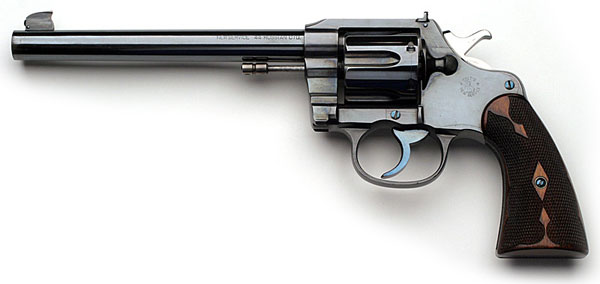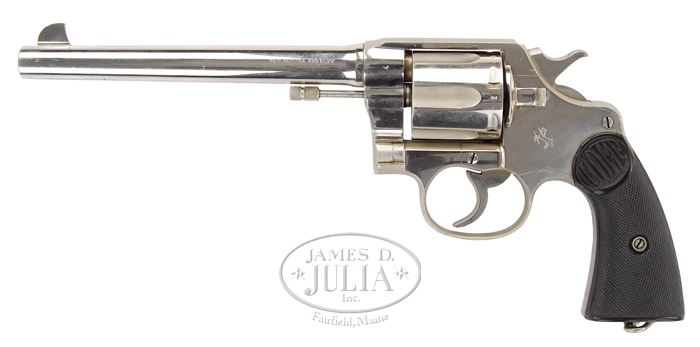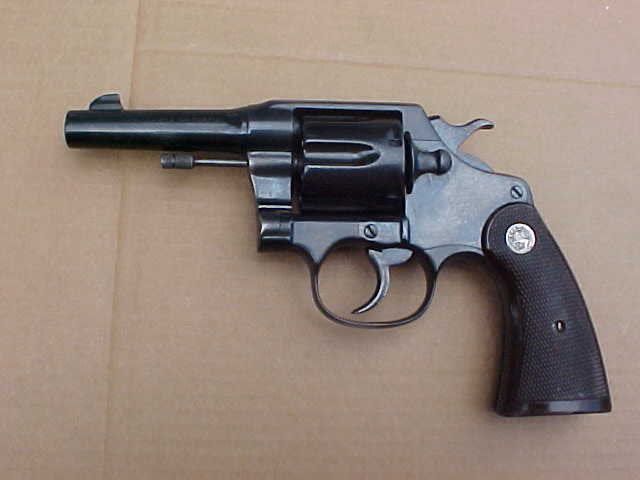In the 1905-1909 period, Colt made several changes, not all at the same time and not to all models at once. One was the change to the basic frame, using a faired in trigger guard rather than the sharp angle previously used. The second was the addition of the "positive" hammer block safety, which necessitated moving the sideplate to the left side. A third was the change of the cylinder thumb latch from the square type originally used with the Model 1889 to the rounded type used until the end of production. Internally, the changes were drastic. In addition to adding the safety, Colt revamped the whole lockwork, scrapping the rather unreliable and trouble-prone system used in the New Army and Navy series for a variation of the Galand lock. Old even then, and requiring skilled assemblers, it served until the end of production.
In some models, those changes appear to have been done simultaneously, but the early .32 and .38 Police Positives have the old style frame, while some New Service revolvers with the new frame have the old cylinder latch.
There are unexpected variations. I have a New Model Army, serial 2791xx (c. 1907),with the new style trigger guard, but with the sideplate still on the right and the old mechanism. Apparently Colt changed their frame forging before they were ready to drop the A & N line, so they kept the old tooling running.
One thing that is certain is that the positive safety had to be fitted into the solid side of the frame, so guns with it will ALWAYS have the sideplate on the left.
So there would seem to be no solid single defining points at which one can use the term "new model" or "variation" or "change". We can definitely say that an early New Service with the straight bottom frame, no safety and a square latch is the "old model." And one with a faired frame line, safety and round latch is the "new model." But in between, there is confusion.
Jim






